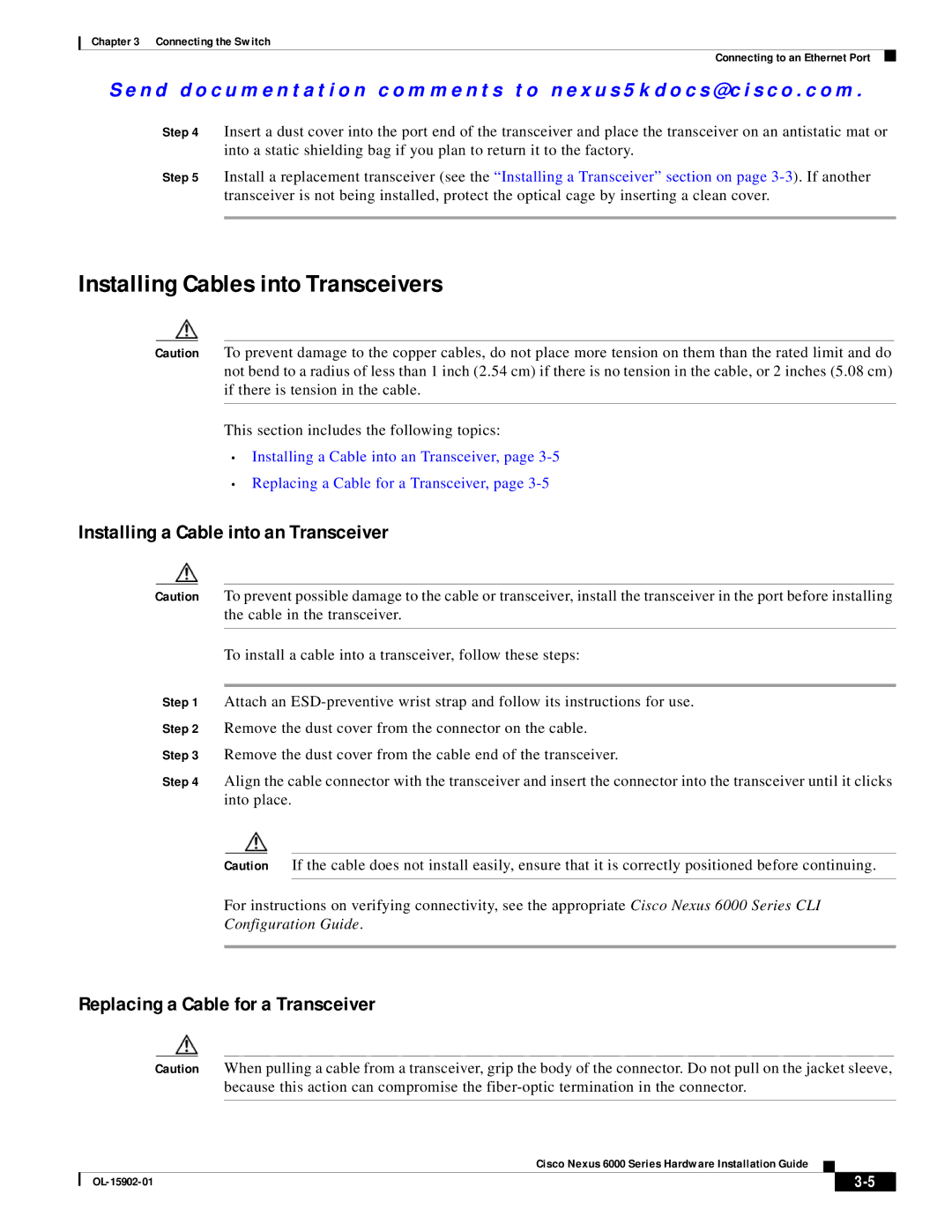
Chapter 3 Connecting the Switch
Connecting to an Ethernet Port
Se n d d o c u m e n t a t i o n c o m m e n t s t o n ex u s 5 k d o c s @ c i s c o . c o m .
Step 4 Insert a dust cover into the port end of the transceiver and place the transceiver on an antistatic mat or into a static shielding bag if you plan to return it to the factory.
Step 5 Install a replacement transceiver (see the “Installing a Transceiver” section on page
Installing Cables into Transceivers
Caution To prevent damage to the copper cables, do not place more tension on them than the rated limit and do not bend to a radius of less than 1 inch (2.54 cm) if there is no tension in the cable, or 2 inches (5.08 cm) if there is tension in the cable.
This section includes the following topics:
•Installing a Cable into an Transceiver, page
•Replacing a Cable for a Transceiver, page
Installing a Cable into an Transceiver
Caution To prevent possible damage to the cable or transceiver, install the transceiver in the port before installing the cable in the transceiver.
To install a cable into a transceiver, follow these steps:
Step 1 Attach an
Step 2 Remove the dust cover from the connector on the cable.
Step 3 Remove the dust cover from the cable end of the transceiver.
Step 4 Align the cable connector with the transceiver and insert the connector into the transceiver until it clicks into place.
Caution If the cable does not install easily, ensure that it is correctly positioned before continuing.
For instructions on verifying connectivity, see the appropriate Cisco Nexus 6000 Series CLI
Configuration Guide.
Replacing a Cable for a Transceiver
Caution When pulling a cable from a transceiver, grip the body of the connector. Do not pull on the jacket sleeve, because this action can compromise the
Cisco Nexus 6000 Series Hardware Installation Guide
|
| ||
|
|
